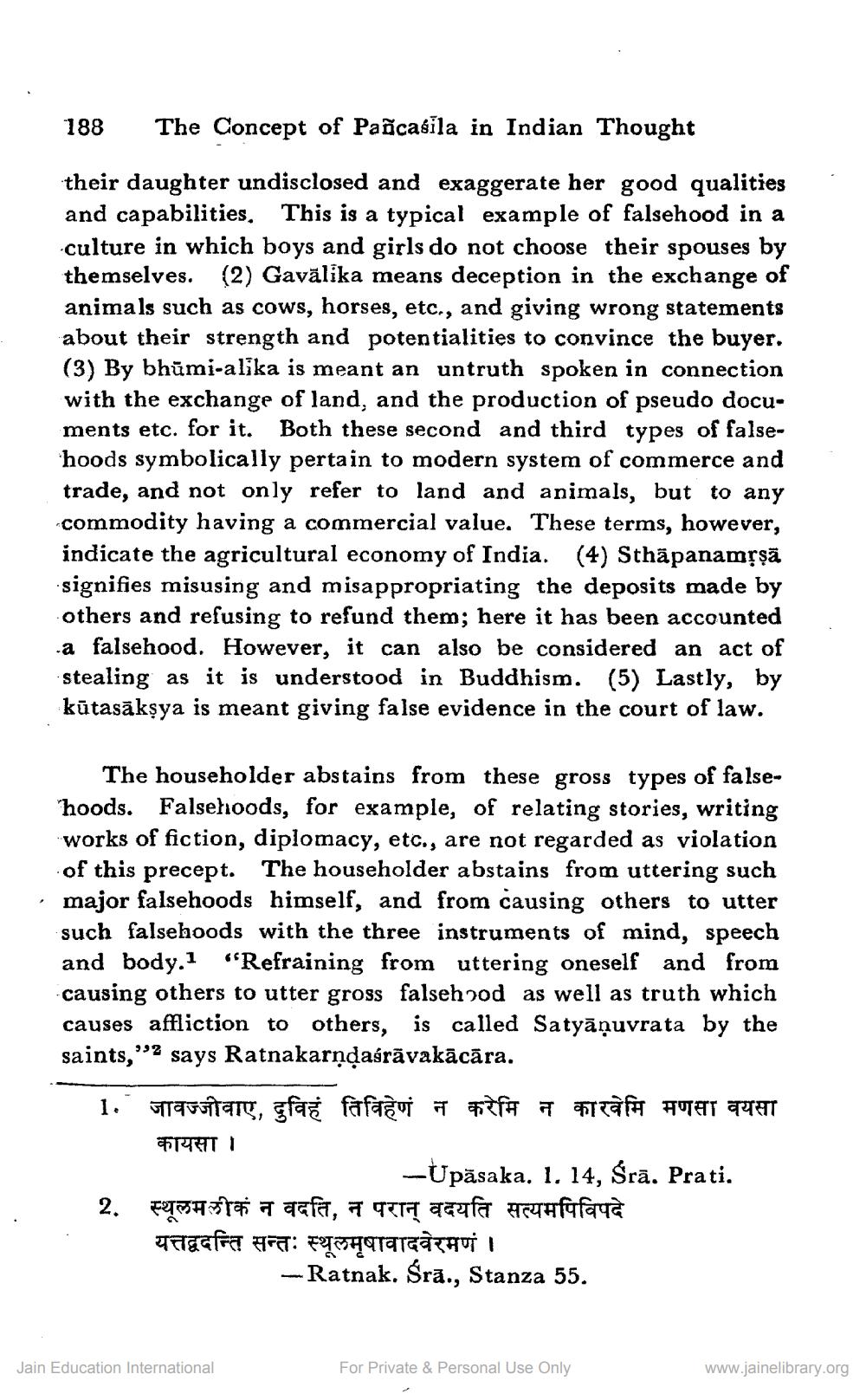________________
188 The Concept of Pañcasila in Indian Thought their daughter undisclosed and exaggerate her good qualities and capabilities. This is a typical example of falsehood in a culture in which boys and girls do not choose their spouses by themselves. (2) Gavälika means deception in the exchange of animals such as cows, horses, etc., and giving wrong statements about their strength and potentialities to convince the buyer. (3) By bhūmi-alika is meant an untruth spoken in connection with the exchange of land, and the production of pseudo documents etc. for it. Both these second and third types of falsehoods symbolically pertain to modern system of commerce and trade, and not only refer to land and animals, but to any commodity having a commercial value. These terms, however, indicate the agricultural economy of India. (4) Sthapanamțşā signifies misusing and misappropriating the deposits made by others and refusing to refund them; here it has been accounted .a falsehood. However, it can also be considered an act of stealing as it is understood in Buddhism. (5) Lastly, by kūtasākşya is meant giving false evidence in the court of law.
The householder abstains from these gross types of falsehoods. Falsehoods, for example, of relating stories, writing works of fiction, diplomacy, etc., are not regarded as violation
of this precept. The householder abstains from uttering such · major falsehoods himself, and from causing others to utter
such falsehoods with the three instruments of mind, speech and body.1 "Refraining from uttering oneself and from causing others to utter gross falsehood as well as truth which causes affliction to others, is called Satyāņuvrata by the saints,"2 says Ratnakarņdaírāvakācāra. 1. जावज्जीवाए, दुविहं तिविहेणं न करेमि न कारवेमि मणसा वयसा FOTETTI
-Upāsaka. 1. 14, Śrā. Prati. 2. स्थूलमलीकं न वदति, न परान् वदयति सत्यमपिविपदे यत्तद्वदन्ति सन्तः स्थूलमृषावादवेरमणं ।
-Ratnak. Sra., Stanza 55.
Jain Education International
For Private & Personal Use Only
www.jainelibrary.org




